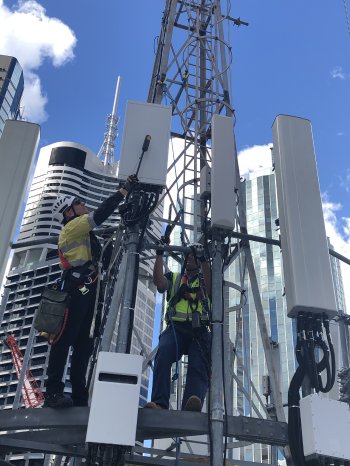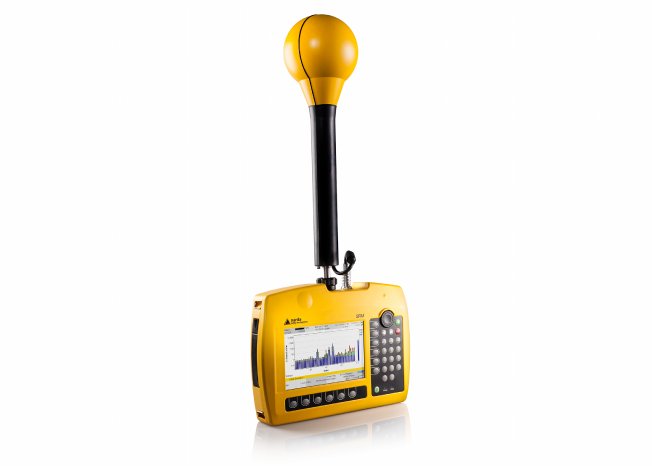Narda instruments are 5G ready
Narda STS is already well situated for this new standard with their product portfolio. Even in the rarified domain up to 88 GHz, which will become relevant only in future phases of 5G, the technology company is still the only manufacturer that can actually provide suitable measuring equipment. For example, in the field of personal safety in EMF (electric, magnetic, and electromagnetic fields), the RadMan 2 (up to 60 GHz) and Nardalert S3 (up to 100 GHz) already cover the complete spectrum. The broadband meters in the NBM range for analyzing EMF limit values (Narda Broadband Field Meter, up to 90 GHz) are also 5G ready.
When it comes to selective measurements, the Narda SRM-3006 (Selective Radiation Meter, image 2) from 9 kHz to 6 GHz has long been the established international reference device for rapid, standard-compliant and reliable safety assessments. This instrument initially records the actual traffic signals transmitted by the various mobile network providers using frequency and code selective techniques. Using information about the signal source, i.e. parameters that are transmitted within the signaling, the SRM can automatically and precisely extrapolate results to give the EMF values at maximum traffic load for mobile phone systems up to 4G. This procedure is now being demanded for 5G by many legislations. Development work on an additional antenna that will significantly increase the frequency range of the SRM beyond the current upper limit of 6 GHz is proceeding rapidly at Narda right now.
In fact, the demodulation of the broadband signals for 5G is not the real challenge from the measurement point of view. Practically all the questions regarding the new standard have been answered. Extrapolation is theoretically possible for 5G, but this does not in itself represent the answer to the problem. Beamforming is the name of the problem that is giving developers a real headache at an international level. To achieve higher efficiency, the radio signals are focused or beamed in the direction of the receiver. Beamforming is viewed as a key technology and will be rolled out over wide areas for the first time in connection with 5G. The technical achievement of this method is its great potential to greatly improve the signal quality and energy efficiency of the standard. When linked with the large bandwidths, this then enables extremely high data rates to be achieved. So far, it has not been possible to find a functioning measurement method for 5G with all the advantages of extrapolation, so this is still under development. This topic is the subject of much discussion. By subscribing to Narda’s YouTube channel and the NewsTicker, you can be one of the first to know about new developments, straight out of Pfullingen where the work is being done.
Authority is key
Narda STS develops measurement solutions for electromagnetic fields in close cooperation with the industry, authorities, and higher education. As the leader in EMF Safety, technology company Narda is the ideal source of information that is reliable enough to be the basis for many important future decisions in industry and commerce, particularly in this phase of the 5G rollout, which is likely to set the future course of technology in many important ways. That is why Narda engineers regularly contribute their in-depth knowledge to the scientific work of international standardization bodies, including the IEC (International Electrotechnical Commission), CENELEC (Comité Européen de Normalisation Électrotechnique) and the ITU (International Telecommunication Union). A team of highly specialized engineers holds regular discussions on the current technological status with the main players in the industry, thus playing an active part in shaping the legally binding technical rules and standards.
This text and press images are also available from
www.narda-sts.com under: Company > Press


